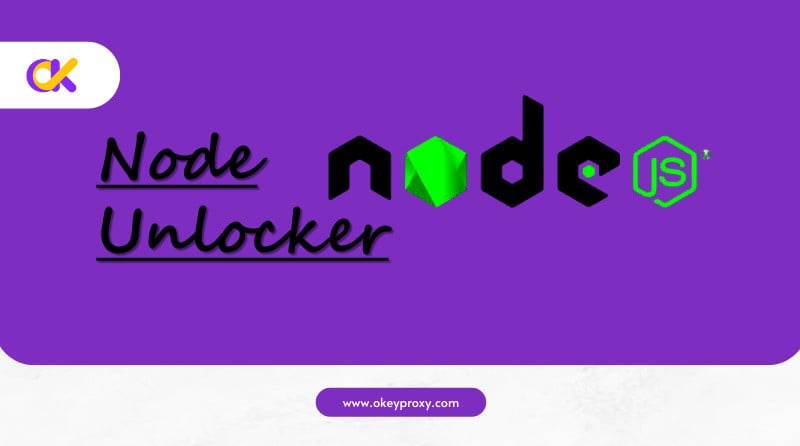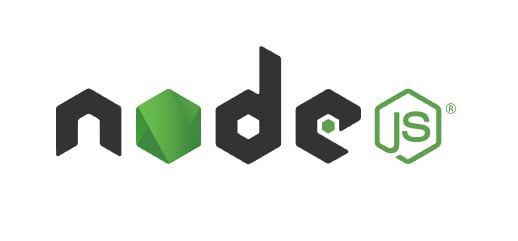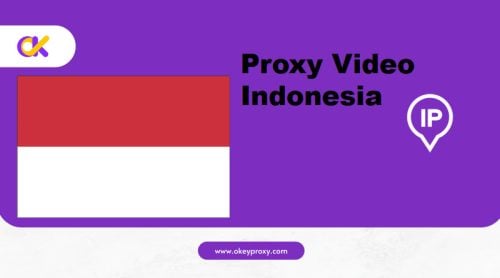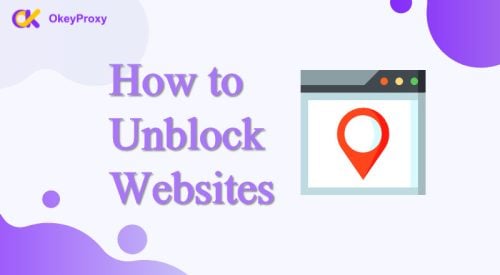Ho notato che alcuni siti web sono stati bloccati e non è possibile sbloccare l'accesso in questo momento. Sbloccatore di nodi è uno strumento utilizzato per aggirare le restrizioni dei siti web, spesso impiegato per accedere a contenuti che potrebbero essere bloccati in alcune regioni o da alcuni filtri di rete. Si tratta di un server proxy basato su Node. js che consente agli utenti di accedere ai siti web bloccati mascherando gli indirizzi IP e instradando le richieste attraverso un server diverso.
Che cos'è Node Unblocker
Node Unblocker è uno strumento progettato per aiutare gli utenti a bypassare i blocchi dei siti web e ad accedere ai contenuti che potrebbero essere limitati a causa della posizione geografica o delle politiche di rete. Funziona reindirizzando le richieste attraverso un server che non è soggetto alle stesse restrizioni, consentendo di visualizzare i contenuti bloccati.
Come funziona Node Unblocker
- Quando si utilizza Node Unblocker, le richieste vengono prima inviate a un server che funge da proxy. Questo server inoltra poi le richieste al sito web di destinazione.
- La risposta del sito web di destinazione viene ricevuta dal server di Node Unblocker, che poi invia il contenuto.
- Questo processo maschera l'indirizzo IP, facendo sembrare che la richiesta provenga dal server di Node Unblocker piuttosto che dal proprio dispositivo.
Node Unblocker è sicuro?
Gli sbloccatori di nodi possono aiutarvi ad accedere ai siti bloccati, ma sono un po' un azzardo. Sebbene siano comodi e facili da usare, comportano un rischio poiché i dati passano attraverso un server sconosciuto, esponendovi potenzialmente a minacce alla sicurezza o a malware. Inoltre, non sono sempre affidabili. Se ne utilizzate uno, scegliete una fonte affidabile, ma le opzioni migliori sono le VPN o i siti affidabili. servizi proxy per prestazioni più sicure e costanti.
Pro e contro
Pro:
- Facilità d'uso: semplice da configurare e utilizzare, spesso attraverso un'estensione del browser o uno strumento basato sul web.
- Bypassare i blocchi: Efficace per aggirare le restrizioni geografiche e accedere ai contenuti bloccati.
Contro:
- Privacy limitata: Sebbene aiuti ad accedere ai contenuti, potrebbe non fornire lo stesso livello di anonimato di altri strumenti.
- Impatto sulle prestazioni: Potenziale latenza dovuta all'instradamento delle richieste attraverso un server aggiuntivo.
- Manutenzione: Potrebbe richiedere aggiornamenti regolari per garantire la compatibilità e la sicurezza.
Creare Sbloccatore di nodi
Per sbloccare Internet con Node Unblocker, è necessario che Node.js sia installato sul vostro sistema. Ecco una guida passo passo per iniziare:
-
Installare Node.js
Se non l'avete ancora fatto, scaricate e installate Node.js dal sito sito web ufficiale. Assicuratevi di installare la versione LTS (Long Term Support) per garantire la stabilità.
-
Creare una nuova directory di progetto
Aprite un terminale o un prompt dei comandi e create una nuova directory per il vostro progetto Node Unblocker:
mkdir node-unblocker cd node-unblocker -
Inizializzare un nuovo progetto Node.js
All'interno della cartella del progetto, inizializzare un nuovo progetto Node.js:
npm init -yQuesto comando crea un file package.json con le impostazioni predefinite.
-
Installare Node Unblocker
Installare Node Unblocker e le sue dipendenze usando npm:
npm installare node-unblocker -
Creare uno script server di base
Creare un nuovo file chiamato server.js nella cartella del progetto e aggiungere il seguente codice:
const express = require('express'); const unblocker = require('node-unblocker'); const app = express(); const port = 3000; app.use('/', unblocker()); app.listen(port, () => { console.log(`Il server di Node Unblocker è in esecuzione all'indirizzo http://localhost:${port}`); });Questo script imposta un server Express di base che utilizza Node Unblocker per gestire le richieste.
-
Eseguire il server
Avviare il server Node Unblocker con il seguente comando:
nodo server.jsDovrebbe apparire un messaggio che indica che il server è in esecuzione. Aprite il browser e accedete a http://localhost:3000. È ora possibile utilizzare il server per accedere ai siti Web bloccati aggiungendo l'URL che si desidera visitare alla fine dell'indirizzo. Ad esempio:
http://localhost:3000/https://example.com -
Personalizzare la configurazione
Per personalizzare Node Unblocker, è possibile modificare il file server.js. Ad esempio, si possono impostare intestazioni personalizzate o gestire in modo diverso percorsi specifici.
Ecco un esempio di come impostare intestazioni personalizzate:
app.use('/', unblocker({ header: { 'User-Agent': 'YourCustomUserAgent' } }));
Suggerimenti avanzati per Node Unblocker
-
Intestazioni e richieste di modifica
È possibile personalizzare le intestazioni delle richieste o modificarle prima che raggiungano il server di destinazione. Ecco come aggiungere intestazioni personalizzate e manipolare le richieste:
app.use('/', unblocker({ header: { 'User-Agent': 'YourCustomUserAgent', 'Accept-Language': 'en-US,en;q=0.9' }, onRequest: (req) => { // Esempio: Modificare l'URL o le intestazioni della richiesta req.headers['X-Custom-Header'] = 'Value'; } })); -
Gestione dei cookie
Per gestire correttamente i cookie, soprattutto quando si tratta di siti che utilizzano la gestione delle sessioni, potrebbe essere necessario gestirli manualmente:
const cookieParser = require('cookie-parser'); app.use(cookieParser()); app.use('/', unblocker({ onRequest: (req) => { // Esempio: Passare i cookie insieme alla richiesta req.headers['Cookie'] = req.cookies['someCookieName']; } })); -
Limitazione della velocità
Per evitare abusi e gestire il carico, è possibile implementare la limitazione della velocità:
const rateLimit = require('express-rate-limit'); const limiter = rateLimit({ finestraMs: 15 * 60 * 1000, // 15 minuti max: 100 // Limita ogni IP a 100 richieste per windowMs }); app.use(limiter); -
Autenticazione proxy
Se il server proxy richiede l'autenticazione, è possibile configurarlo in questo modo:
app.use('/', unblocker({ proxy: { host: 'your.proxy.server', porta: 8080, auth: 'username:password' } })); -
Supporto HTTPS
Se si desidera servire il proxy tramite HTTPS, è necessario configurare un server HTTPS:
const https = require('https'); const fs = require('fs'); const opzioni = { key: fs.readFileSync('path/to/your/private-key.pem'), cert: fs.readFileSync('path/to/your/certificate.pem') }; https.createServer(options, app).listen(443, () => { console.log('Server HTTPS di Node Unblocker in esecuzione sulla porta 443'); });
Integrazione di Proxy e Node Unblocker
I proxy fungono da intermediari tra lo strumento di scraping e il sito web di destinazione, mascherando il vostro indirizzo IP. Esistono diversi tipi di proxy:
- Proxy per centri dati: Forniti dai centri dati, sono veloci ma possono essere facilmente individuati.
- Deleghe residenziali: Assegnati dai provider di servizi Internet (ISP) ai proprietari di casa, sono più difficili da individuare.
- Proxy a rotazione: Cambia l'indirizzo IP per ogni richiesta, rendendo difficile il rilevamento dello scraping per il sito di destinazione.
Node Unblocker aiuta a gestire la rotazione degli IP e può integrarsi con i servizi proxy per migliorare l'efficacia dello scraping. Servizi come ScraperAPI e Crawlera (ora Zyte) offrono servizi integrati di rotazione proxy e il blocco dei nodi.
Ecco una guida passo passo per raggiungere questo obiettivo, compreso l'uso di un Node Unblocker per gestire le configurazioni dei proxy.
-
Impostare il progetto Node.js

Per prima cosa, assicuratevi di aver installato Node.js e di aver configurato il vostro progetto.
Node.js può essere utilizzato per creare tecniche di sblocco, in particolare nel contesto del web scraping, delle richieste API o dell'accesso ai contenuti dietro restrizioni. Lo sblocco in questo contesto di solito comporta l'aggiramento di alcune restrizioni, come la limitazione della velocità, i CAPTCHA o i geoblocchi. I proxy sono uno dei metodi più comuni utilizzati in Node.js per lo sblocco:
mkdir my-scraping-project cd my-scraping-project npm init -y -
Installare i pacchetti necessari
Avrete bisogno di pacchetti per il web scraping, la gestione dei proxy e il blocco dei nodi. Alcune scelte comuni includono:
axiosorichiesta-promessaper effettuare richieste HTTP.agente proxyper la gestione delle connessioni proxy.buttafuorionodo-bloccatoreper il blocco dei nodi.
Installare questi pacchetti utilizzando npm:
npm installa axios proxy-agent node-blocker -
Utilizzare i proxy in Node.js
È possibile utilizzare la funzione
agente proxyper gestire le connessioni proxy. Ecco un esempio di base che utilizzaaxioseagente proxy:const axios = require('axios'); const ProxyAgent = require('proxy-agent'); // Definire il server proxy const proxy = 'http://username:password@proxyserver:port'; // Creare un'istanza di ProxyAgent const agent = new ProxyAgent(proxy); funzione async fetchData(url) { try { const response = await axios.get(url, { httpAgent: agent, httpsAgent: agent }); console.log(response.data); } catch (error) { console.error('Errore nel recupero dei dati:', error.message); } } // Test con un URL fetchData('https://example.com') .then(data => { console.log('Fetched data:', data); }) .catch(err => { console.error('Failed to fetch data:', err); }); -
Gestire il blocco dei nodi
Il blocco dei nodi può essere utilizzato per bloccare determinati IP o per gestire la limitazione della velocità. Ecco un esempio che utilizza
nodo-bloccatore:const NodeBlocker = require('node-blocker'); const blocker = new NodeBlocker({ // Opzioni di configurazione block: ['http://example.com/bad-url'], log: true }); // Creare un gestore di richieste personalizzato funzione async fetchData(url) { se (blocker.shouldBlock(url)) { console.error('Richiesta bloccata:', url); return; } try { const response = await axios.get(url, { httpAgent: agent, httpsAgent: agent }); console.log(response.data); } catch (error) { console.error('Errore nel recupero dei dati:', error.message); } } fetchData('http://example.com'); -
Ruotare i proxy
Per ruotare i proxy, è possibile mantenere un elenco di proxy e selezionarne uno nuovo per ogni richiesta:
const proxy = [ 'http://proxy1:port', 'http://proxy2:port', 'http://proxy3:port', // Aggiungere altri proxy qui ]; function getRandomProxy() { const index = Math.floor(Math.random() * proxies.length); return proxies[index]; } async function fetchData(url) { const proxy = getRandomProxy(); const agent = new ProxyAgent(proxy); try { const response = await axios.get(url, { httpAgent: agent, httpsAgent: agent }); console.log(response.data); } catch (error) { console.error('Errore nel recupero dei dati:', error.message); } } fetchData('http://example.com'); -
Trattamento degli errori e dei tentativi di risposta
Si potrebbe voler implementare una logica di retry per gestire le richieste fallite o i problemi del proxy:
funzione async fetchData(url, retries = 3) { const proxy = getRandomProxy(); const agent = new ProxyAgent(proxy); try { const response = await axios.get(url, { httpAgent: agent, httpsAgent: agent }); console.log(response.data); } catch (error) { if (retries > 0) { console.error('Error fetching data, retry...', error.message); await fetchData(url, retries - 1); } else { console.error('Fallito dopo più tentativi:', error.message); } } } fetchData('http://example.com');
Come risolvere i problemi di Node Unblocker
Problemi comuni
404 Errori
Assicuratevi che l'URL a cui state cercando di accedere sia corretto e che il sito web di destinazione sia attivo. Verificare che Node Unblocker sia impostato correttamente per gestire vari tipi di URL.
Problemi di prestazioni
Se il server è lento o poco reattivo, considerate la possibilità di aggiornare l'hardware o di passare a una soluzione di hosting più performante. Verificare la presenza di eventuali colli di bottiglia nel codice o nella configurazione.
Problemi di sicurezza
Aggiornare regolarmente Node Unblocker e le sue dipendenze per correggere le vulnerabilità note. Utilizzare pratiche di codifica sicure e rivedere le configurazioni.
Debug
Registrazione verbosa
Attivare la registrazione verbosa per eseguire il debug dei problemi in modo più efficace. È possibile aggiungere i log della console alle funzioni di middleware o di gestione delle richieste:
app.use('/', unblocker({
onRequest: (req) => {
console.log(`Richiesta effettuata a: ${req.url}`);
}
}));
Strumenti di rete
Utilizzate strumenti di rete come Postman o cURL per verificare le risposte del server proxy e assicurarvi che gestisca le richieste come previsto.
Problemi di configurazione
Errori di dipendenza
Assicurarsi che tutti i pacchetti necessari siano installati e aggiornati. Eseguire npm install per assicurarsi che tutte le dipendenze siano installate correttamente.
Errori del server
Controllare i registri del server per verificare la presenza di eventuali errori. I problemi più comuni includono file di configurazione mancanti o permessi errati.
Problemi di sicurezza
Proteggere dagli abusi
Implementare la limitazione della velocità e monitorare l'uso per proteggere dall'abuso e garantire un uso corretto.
Utilizzare HTTPS
Utilizzare sempre HTTPS per comunicazioni sicure, soprattutto se si gestiscono dati sensibili o credenziali utente.
Sbarazzarsi di Node.js di Node Unblocker
Per rimuovere Node.js dal sistema, la procedura varia a seconda del sistema operativo in uso. Ecco i passaggi per Windows, macOS e Linux:
-
Rimuovere Node da Windows
- Disinstallare dal Pannello di controllo:
- Aprire il Pannello di controllo.
- Andare a "Programmi" > "Programmi e funzionalità".
- Trovare Node.js nell'elenco dei programmi installati.
- Fare clic su di esso e selezionare "Disinstalla".
- Seguire le istruzioni per completare la disinstallazione.
- Eliminare le cartelle Node.js e npm:
- Aprire Esplora file.
- Andare a
C:\File di programmae cancellare il filenodejscartella. - Andare a
C:\Users\AppData\Roaminge cancellare il filenpmenpm-cachecartelle. - Andare a
C:\Users\AppData\Locale cancellare il filenpmenpm-cachese esistono.
- Rimuovere le variabili d'ambiente:
- Fare clic con il tasto destro del mouse su "Questo PC" o "Computer" sul desktop o in Esplora file.
- Selezionare "Proprietà".
- Fare clic su "Impostazioni di sistema avanzate".
- Andare alla scheda "Avanzate" e fare clic su "Variabili d'ambiente".
- Trovate e rimuovete le voci relative a Node.js e npm (come ad esempio
NODO_PATH,PERCORSOche includono Node.js e npm).
- Disinstallare dal Pannello di controllo:
-
Rimuovere Node da macOS
- Rimuovere l'installazione di Node.js:
sudo rm -rf /usr/local/bin/node sudo rm -rf /usr/local/lib/node_modules/npm sudo rm -rf /usr/local/include/node sudo rm -rf /usr/local/lib/node sudo rm -rf ~/.npm
- Eliminare i file rimanenti:
sudo rm -rf /usr/local/bin/npm sudo rm -rf /usr/local/bin/npx sudo rm -rf /usr/local/share/man/man1/node.1 sudo rm -rf /usr/local/share/man/man1/npm.1 sudo rm -rf /usr/local/share/man/man1/npx.1 sudo rm -rf /usr/local/share/systemtap/tapset/node.stp
- Rimuovere l'installazione di Node.js:
-
Rimuovere il nodo da Linux
Disinstallare utilizzando il gestore dei pacchetti (per le distribuzioni basate su Debian come Ubuntu):
sudo apt-get remove nodejs sudo apt-get remove npm
Disinstallare utilizzando il gestore dei pacchetti (per le distribuzioni basate su Red Hat come CentOS):
sudo yum rimuovere nodejs sudo yum rimuovere npm
Rimuovere Node.js installato manualmente:
sudo rm -rf /usr/local/bin/node sudo rm -rf /usr/local/lib/node_modules/npm sudo rm -rf /usr/local/include/node sudo rm -rf /usr/local/lib/node sudo rm -rf ~/.npm
Dopo aver completato questi passaggi, Node.js dovrebbe essere stato rimosso dal sistema. Si può verificare aprendo un terminale o un prompt dei comandi e digitando nodo -v o npm -v per assicurarsi che i comandi non vengano più riconosciuti.
Conclusione
Node Unblocker è un potente strumento per aggirare le restrizioni dei siti web e accedere a contenuti altrimenti non disponibili. Grazie alla facilità di configurazione, alle funzioni personalizzabili e ai vari casi d'uso, offre una soluzione flessibile sia per uso personale che professionale. Integrato con Proxy, come OkeyProxyL'utente può non solo mascherare l'IP, ma anche cambiare l'IP in una posizione specifica e ruotare l'IP automaticamente. Seguendo i passaggi di impostazione e configurazione descritti in questa guida, è possibile utilizzare efficacemente Node Unblocker per migliorare la propria esperienza di navigazione e superare le barriere di accesso.









